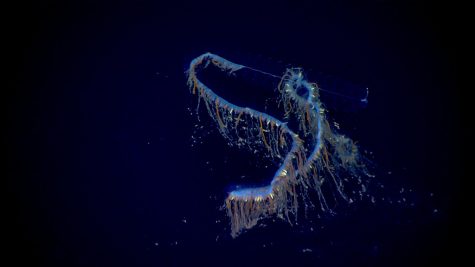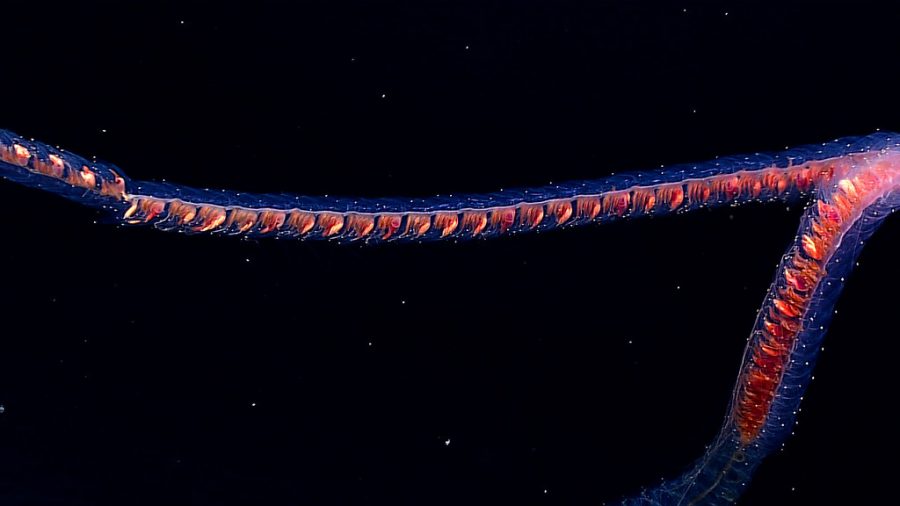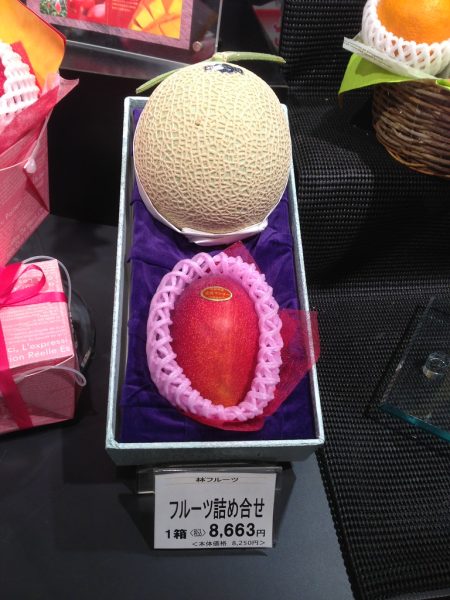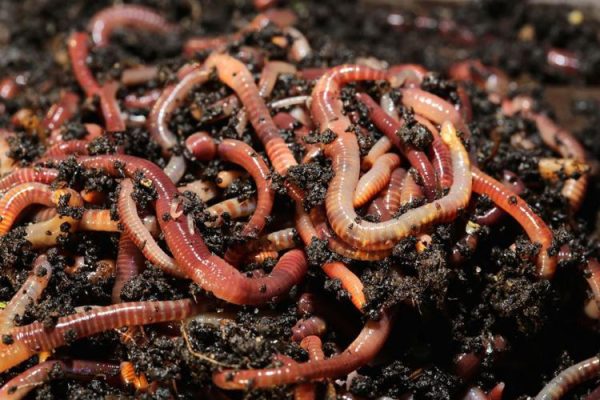The Giant Siphonophore: Mysterious Deep Sea Dwellers
Source: NOAA Office of Ocean Exploration
“Siphonophore” by Papahānaumokuākea Marine National Monument is marked with CC PDM 1.0
Seemingly endless creatures, giant siphonophores can span up to 130 feet or 40 meters long. Giant siphonophores are undersea invertebrates that live in the dark depths of Earth’s oceans. While the extensive form of the giant siphonophore may seem like it is one large creature, it is really made up of multiple smaller organisms. These organisms each have a separate purpose, and they all work together to survive. Some parts of the siphonophore catch and digest food, reproduce, or help with swimming, whereas other parts may have stingers to provide protection. These different organisms work together and combine their efforts to withstand and endure any threats they may encounter.
For example, giant siphonophores live in the deep sea where there is little to no sunlight, freezing water temperatures, and heavy water pressure. To adapt to this environment, parts of the siphonophore have bioluminescent bodies, meaning they create their own source of light. This beneficial feature helps attract prey and can disorient predators. Additionally, giant siphonophores often have hanging stingers to catch their food, which is typically small crustaceans, fishes, and fish larvae.

However, despite these adaptations siphonophores have two main predators: the ocean sunfish and leatherback sea turtle. These two creatures have special spikes in their mouths that keep the jelly-like form of the siphonophore from escaping. Nevertheless, since leatherback sea turtles and sunfish don’t often travel to the deep parts of oceans, giant siphonophores are less likely to be caught and consumed.
While siphonophores inhabit the briny depths of the ocean, they still can be affected by human pollution. Various microplastics and trash have been found at the seafloor, which is very harmful not only to siphonophores but to other deep sea creatures as well. Garbage, plastic, and waste can ruin ecosystems and endanger ocean animals.
Although siphonophores aren’t endangered, people should still make efforts to conserve and protect impressive ocean creatures like them. By reducing the amount of plastic and trash disposed of, humans can support and preserve ocean life. This can be as simple as reusing plastic bags and containers instead of throwing them away after one use. Even though giant siphonophores don’t directly benefit from these actions, reducing ocean pollution will help keep their environment clean and safe.
Related Articles:
https://www.montereybayaquarium.org/animals/animals-a-to-z/giant-siphonophore
https://www.nytimes.com/2020/04/14/science/longest-animal-ocean.html










